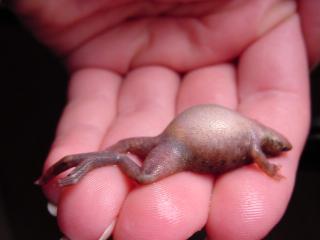Rae Ellen Bichell of NPR writes that a majority of working adults say they still go to work when they have a cold or the flu. There are some jobs where doing that can have a big effect on health.
 At least half of people who work in very public places, like hospitals and restaurants, report going to work when they have a cold or the flu. Those were among the findings of a poll conducted by NPR, the Robert Wood Johnson Foundation and the Harvard T.H. Chan School of Public Health.
At least half of people who work in very public places, like hospitals and restaurants, report going to work when they have a cold or the flu. Those were among the findings of a poll conducted by NPR, the Robert Wood Johnson Foundation and the Harvard T.H. Chan School of Public Health.
They are some of the last people you’d want to go to work sick, because they tend to have a lot of contact with people. And that helps spread disease.
“It’s one of the biggest food safety problems that there is, and we’ve known about it forever,” says Kirk Smith, who oversees foodborne outbreak investigations with the Minnesota Department of Health. But he says it’s really hard to get people to stop doing it.
When it comes to food handling, there’s one illness that’s particularly concerning: norovirus. “It is by far the most common cause of foodborne illness,” says Smith. According to the Centers for Disease Control and Prevention, the virus is responsible for 35 percent of them.
That’s because there are billions of virus particles per gram in stool and vomit. It only takes about 20 of those to get someone sick. And norovirus can hitchhike from surface to surface. It takes a high concentration of bleach to kill it.
“And so it just takes microcontamination of your hands, if you don’t do a perfect job washing, to be able to contaminate food with enough of the virus to infect lots and lots of people,” says Smith.
The same virus has plagued restaurant customers across the country. Last winter, 140 people — including much of the Boston College basketball team — got sick from eating at a Chipotle in Boston where one person had gone to work sick.
“It’s definitely the norm to go into work sick. That’s what I and most of my co-workers usually do,” says Anthony Peeples. He used to work at an Olive Garden restaurant. Now he’s a bartender at a casino in Michigan City, Ind.
The CDC has found that 1 in 5 food service workers has reported working while sick with vomiting and diarrhea.


 animals, or with runoff from animal production facilities, or by improperly cleaned growing or processing equipment. Seeds also might become contaminated during harvesting, distribution, or storage. Many clover seeds are produced for agricultural use, so they might not be processed, handled, and stored as human food would. Conditions suitable for sprouting the seed also permit bacteria that might be present on seeds to grow and multiply rapidly.
animals, or with runoff from animal production facilities, or by improperly cleaned growing or processing equipment. Seeds also might become contaminated during harvesting, distribution, or storage. Many clover seeds are produced for agricultural use, so they might not be processed, handled, and stored as human food would. Conditions suitable for sprouting the seed also permit bacteria that might be present on seeds to grow and multiply rapidly.
 spread might explain illnesses among primary?cases and their household contacts. The outbreak appeared to have been confined to Restaurant A and did not spread to the general community.
spread might explain illnesses among primary?cases and their household contacts. The outbreak appeared to have been confined to Restaurant A and did not spread to the general community..jpg) from the school.
from the school.
 identified as the source of African dwarf frogs associated with human infections in 2010. Past information about this investigation in 2009-2010 can be found on the CDC Salmonella page.
identified as the source of African dwarf frogs associated with human infections in 2010. Past information about this investigation in 2009-2010 can be found on the CDC Salmonella page.(1).jpg) can spot a difference between the two. “We hope your immune system is ready because you’re about to take the sandwich test,” it reads.
can spot a difference between the two. “We hope your immune system is ready because you’re about to take the sandwich test,” it reads.
.jpg) continually present in the undisturbed eco-systems around us are utilized in a controlled environment to clean and re-cycle our water.”
continually present in the undisturbed eco-systems around us are utilized in a controlled environment to clean and re-cycle our water.”.jpg) District of Columbia. Results of the investigation indicate a link to eating Tiny Greens Alfalfa Sprouts or Spicy Sprouts at Jimmy John’s restaurant outlets.
District of Columbia. Results of the investigation indicate a link to eating Tiny Greens Alfalfa Sprouts or Spicy Sprouts at Jimmy John’s restaurant outlets..jpg) preventive mode", regardless of funding.
preventive mode", regardless of funding..jpeg)
.png) stomach flu at a corporate event catered by Druxy’s Tuesday, said Dr. Chris Mackie, one of the city’s associate medical officers of health.
stomach flu at a corporate event catered by Druxy’s Tuesday, said Dr. Chris Mackie, one of the city’s associate medical officers of health.